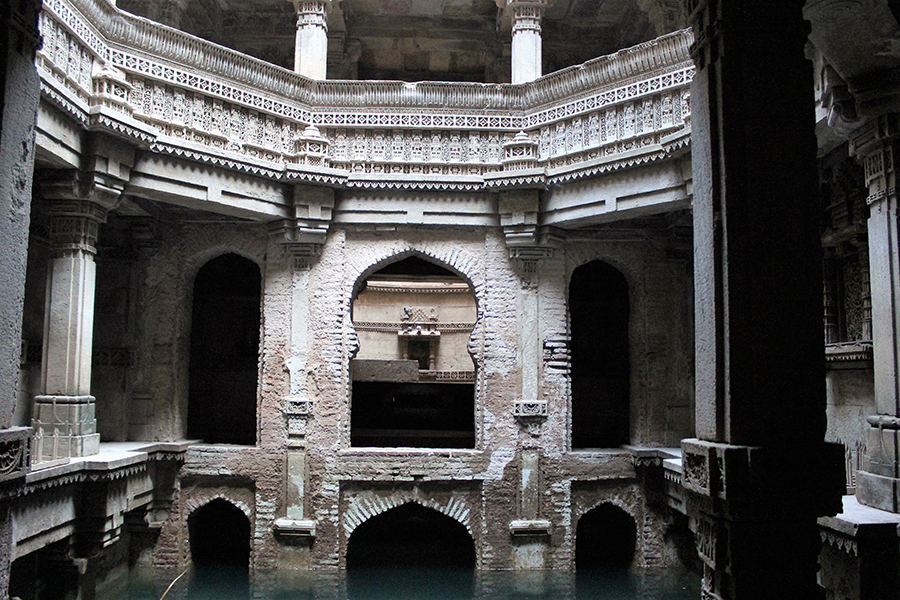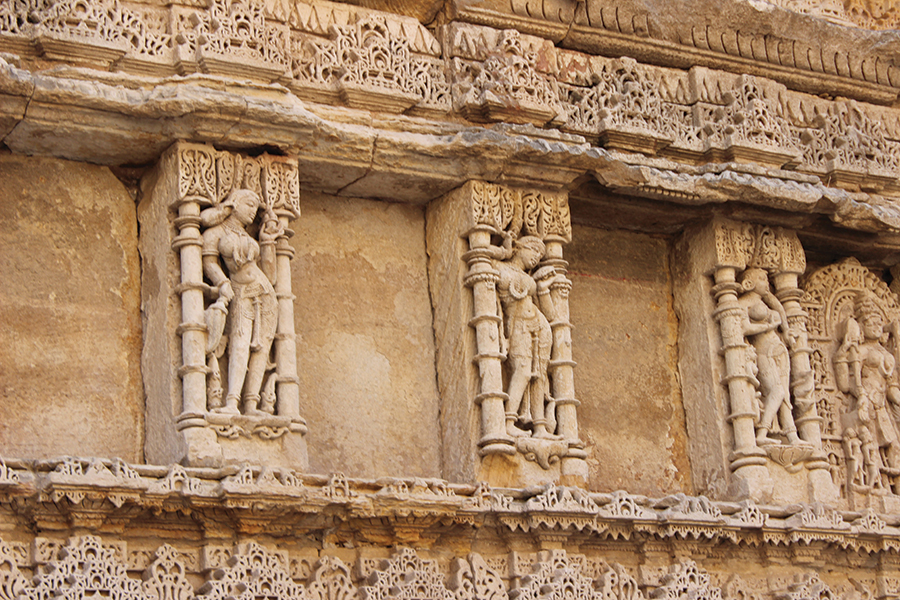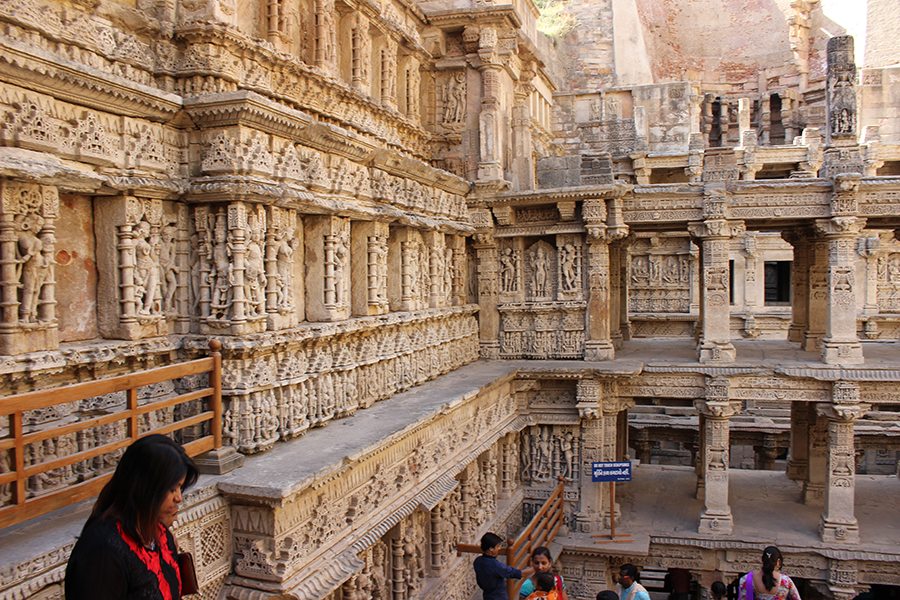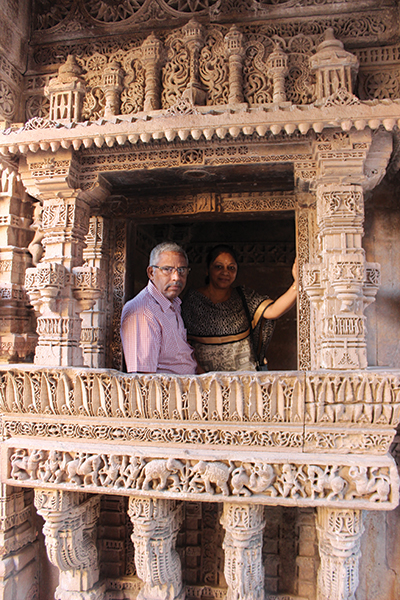Right from childhood, many of our visits to Gujarat would be considered incomplete without a visit to two of the beautiful structures that had always fascinated me as a child … the step wells of Gujarat. Adalaj and Rani ni Vav (vav is Gujarati for ‘well’).

In a dry and arid State like Gujarat, as also Rajasthan, and the adjoining areas of Pakistan, the vavs, which are also known as step ponds, were built to collect water for weary travellers. To make up for the stark, desert-like conditions, and provide restful spots for weary limbs, the different levels, leading down to the water pools were adorned and decorated with beautiful carvings. Rani ni Vav, recognised for its sheer architectural brilliance and elegant and elaborate carvings of deities, was declared by UNESCO as a World Heritage site in June 2014.
Most of the step wells of Gujarat and Rajasthan were built between the 5th and 19th centuries. The ancient city of Mohenjo-daro itself had 700 wells in just one section of the city.
Remember Paheli, Amol Palekar’s film starring Shah Rukh Khan and Rani Mukherjee shot in Rajasthan? It has a quaint theme of ghosts and one such step well is beautifully showcased in this film. Such step wells were used by travellers for drinking, bathing and washing clothes and their beautification was connected to festivals being celebrated here.
Such step wells were used by travellers for drinking, bathing and washing clothes and their beautification was connected to festivals being celebrated here.
On a recent visit to Gujarat, we visited two of the most famous vavs of Gujarat, at Adalaj, only 18 km from the city of Ahmedabad and Rani ni Vav in Patan district, about 125 km from Ahmedabad.
Both these step wells are more than just vavs, built as they used to be in the olden days, by the royalty or rich traders, to just harvest and distribute water. What makes them major tourist attractions are the intricate carvings and sculptures along the length and breadth of the entire structures which are so beautiful that they literally leave you speechless.
Adalaj ni Vav
The step well at Adalaj, named after the nearby town, is five storeys below the ground level and well over 75 metres in length. Designed in an octagon shape, the stone steps leading to the well are well planned and surrounded by intricately carved pillars and columns. You walk down the steps to the deepest end to find water stored in a circular well, which is open to the sky. This not only adds to its charm but keeps the water fresh.
The entrance has stairs leading from three directions to the first landing, which is surrounded by four fabulously carved balconies or Zarokhas, which present a great photo opportunity for tourists who flock to this wonderful place.
All the walks are intricately carved with Hindu and Jain deities and Islamic motifs and flowers.

The fusion of Hindu and Islamic styles of carving on the various pillars, cornices and niches is apparently due to the fact that the Vav’s initial construction was started by a Hindu chief — King Rana Veer Singh — who was killed in a war with his neighbouring king Mohammed Begda. Begda fell in love with Rana Singh’s widow Rani Roopba, but her condition to marry him was that he should first complete the step well. He agreed and completed the vav, and invited the queen to see it. She arrived, and after walking around the entire vav chanting prayers, she jumped into the well and ended her life.
Rani ni Vav, with ts brilliant and elegant and elaborate carvings of deities, was declared by UNESCO as a World Heritage site in June 2014.
The dominant carvings on the upper floors are of elephants in different designs and the walls are covered with women performing daily chores as well as carvings of dancers and musicians. The predominant fresco here is the Navagraha (nine planets) and Kalp Vriksha, the Tree of Life.
Rani ni Vav
This is another fascinating step well constructed during the rule of Solankis in Gujarat and built in the memory of Bhimdev, the son of King Mularaja, in around 1050 A D by his widowed queen Udayamati.

Over time, this step well, along the banks of River Saraswati, about 125 kms from Ahmedabad, disappeared from view due to the flooding of Saraswati River and was consequently completely covered by silt. It was discovered only in the 1960s, and as the plaque at the site points out, till then “nobody knew that there existed the most ornate Vav here.”
The Rani ni Vav (Queen’s step well) is designed as an inverted temple and was found in an excellent state of preservation. It is about 64 metres in length, 20 metres wide and 27 metres deep. With an ornately carved pillared multi-storeyed pavilion, it has a huge collection tank for surplus water.

Most of the sculptures here are in the form of the 10 avatars of Vishnu. Also depicted are the Nagakanyas, Yoginis and Apsaras, in 16 different styles of makeup, termed solah-shringar. There are more than 800 elaborate sculptures in the seven galleries with a stunning visual appeal. At the water level is a carving of Anantasayana — Vishnu in a reclining position on the Sheshnag. Below the Vav is a tunnel 30 km in length, leading to the town of Sidhpur, which is famous for its pitra shradha ceremonies. This tunnel was used by the King to escape during the war. At present the tunnel is blocked by stones.
Another interesting aspect of these vavs is that they were built not only for collecting and providing water to weary travellers in an arid land. They were meant not only for resting or socialising with fellow travellers but also had spiritual significance. In all cultures and religions water has always had a sacred dimension. Rani ni Vav, in particular, is in essence like a subterranean temple, with so many deities.
Pictures by Pervez Bhagat





